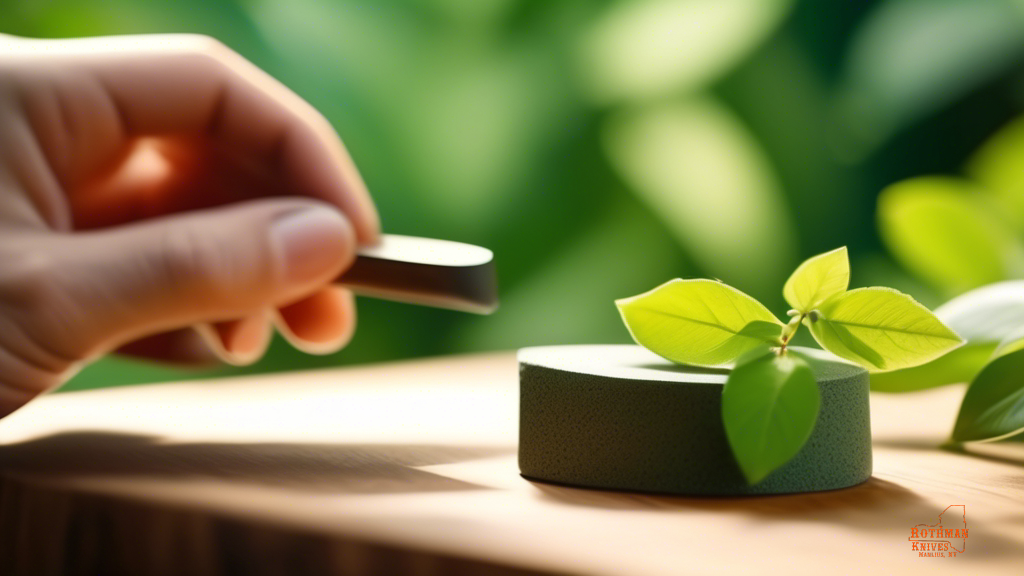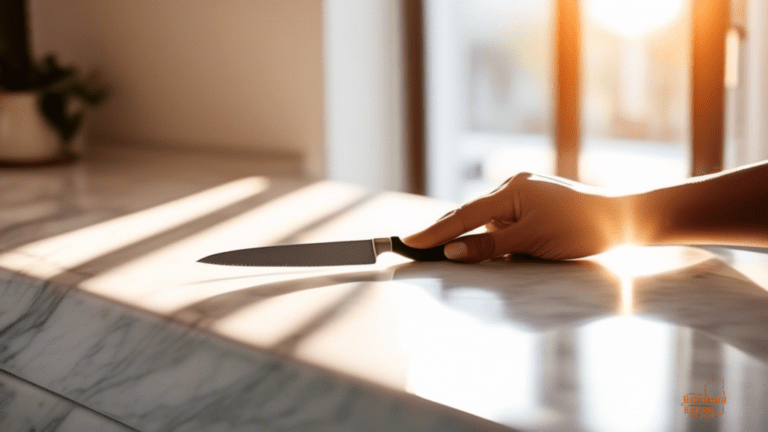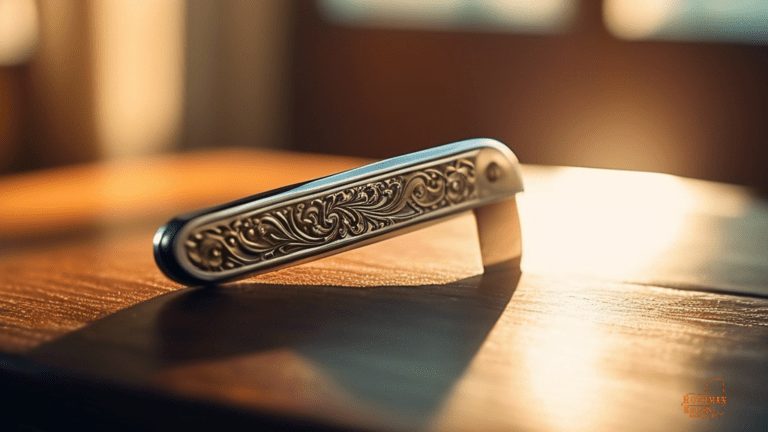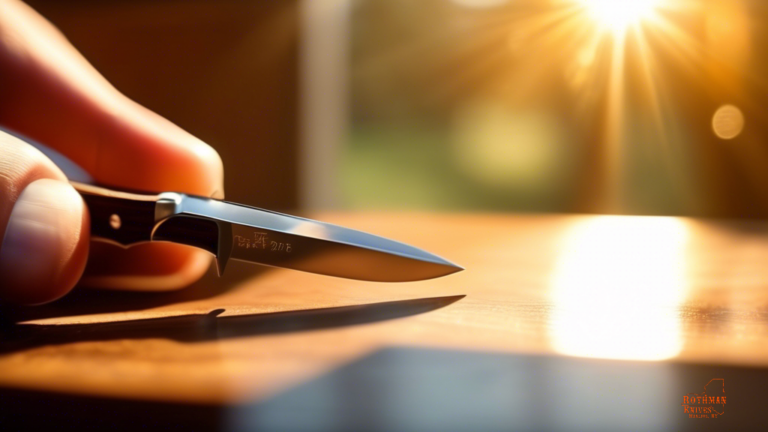Choosing The Right Knife Sharpening Stones
by Mike Rothman · July 19, 2024
Learn how to choose the best knife sharpening stones for your kitchen knives and sharpen like a pro! Find out expert tips and tricks to keep your blades sharp and ready for any task. Click here to master the art of knife sharpening today!
Are you tired of struggling with dull knives in the kitchen? Do you want to take your cooking skills to the next level by ensuring your knives are always sharp and ready for any task? Choosing the right knife sharpening stones can make all the difference in the world.
With so many options available, it can be overwhelming to know where to start. But fear not, because we are here to guide you through the process and help you find the perfect sharpening stones that will meet your needs and elevate your culinary experience.
When it comes to sharpening stones, there are a variety of types and grit levels to choose from, each serving a different purpose. Understanding the differences between these options is crucial in order to achieve optimal results.
By learning the proper techniques for sharpening knives and maintaining your sharpening stones, you can ensure that your knives stay sharp and ready to tackle any cutting task. So, let’s embark on this journey together to find the best sharpening stones for your needs and bring your cooking skills to new heights.
Key Takeaways
- Choosing the right stones is crucial for an enhanced culinary experience
- Understanding types, textures, and grit levels is essential
- Different grit levels serve specific purposes in knife sharpening
- Proper techniques like maintaining angle and applying pressure are important for effective sharpening
Types of Knife Sharpening Stones
When it comes to types of knife sharpening stones, you’ll find that each one has its own unique texture and grit, like a painter choosing the perfect brush for a masterpiece.
Just like artists have their favorite tools, you’ll soon discover which type of stone works best for you and your knives.
Whether you prefer the roughness of a coarse stone or the smoothness of a fine stone, there’s a sense of satisfaction in finding the perfect match for your sharpening needs.
As you delve into the world of knife sharpening stones, you’ll realize that there is a sense of belonging among those who appreciate the art of sharpening.
It’s a skill that requires patience, practice, and a keen eye for detail.
With each stroke on the stone, you’ll feel a connection to those who have mastered the craft before you, creating a sense of camaraderie among knife enthusiasts.
Grit Levels and Their Uses
Different grit levels serve specific purposes for achieving the desired sharpness of a blade. The lower the grit number, the coarser the stone, which is ideal for repairing chips and reshaping a dull blade.
On the other hand, higher grit numbers indicate finer stones that are perfect for polishing and refining the edge of the blade to a razor-sharp finish.
- Coarse grit stones (100-400 grit): These are excellent for reshaping and repairing damaged or dull blades.
- Medium grit stones (800-2000 grit): These stones are great for sharpening and refining the blade edge.
- Fine grit stones (3000-8000 grit): Perfect for polishing and achieving a razor-sharp edge on your knife.
When choosing the right grit level for your sharpening needs, consider the current condition of your blade and the level of sharpness you want to achieve. Understanding the purpose of each grit level will help you select the appropriate sharpening stone to achieve the desired results.
Proper Techniques for Sharpening Knives
To achieve a razor-sharp edge on your blades, it’s essential to master proper techniques for honing.
The key is to maintain a consistent angle while sharpening, typically around 15-20 degrees for most kitchen knives.
Start by holding the knife with one hand and the sharpening stone with the other, applying gentle pressure as you move the blade across the stone in a sweeping motion.
Remember, practice makes perfect, so don’t get discouraged if it takes a few tries to get the hang of it.
As you sharpen your knives, you’ll start to feel a sense of accomplishment and pride in your newfound skill.
Sharpening knives is not just a practical task; it’s a way to connect with a long-standing tradition of craftsmanship and care.
By mastering the proper techniques, you’ll be able to maintain your knives for years to come, ensuring they always perform at their best.
So grab your sharpening stone, embrace the process, and join the community of knife enthusiasts who appreciate the art of honing blades to perfection.
Maintenance and Care of Sharpening Stones
Ensure you regularly clean and dry your sharpening stones to maintain their effectiveness and longevity. Keeping your sharpening stones in top condition is essential for achieving optimal results when sharpening your knives.
Here are some tips to help you properly maintain and care for your sharpening stones:
-
Cleaning:
- Use a brush or a soft cloth to remove any metal particles or debris from the surface of the stone.
- Avoid using harsh chemicals or abrasive cleaners that could damage the stone.
-
Drying:
- After cleaning, make sure to thoroughly dry the sharpening stone before storing it.
- Air drying is recommended to prevent any moisture build-up that could lead to mold or mildew growth.
By following these simple maintenance practices, you can ensure that your sharpening stones remain in excellent condition and continue to provide you with sharp, precise edges on your knives.
Remember, a well-maintained sharpening stone is a key tool in your kitchen arsenal, so take the time to care for it properly.
Choosing the Best Sharpening Stone for Your Needs
Discovering the perfect stone for your blade can be as satisfying as finding the missing piece to a puzzle. Just imagine the feeling of running your knife across a stone that effortlessly sharpens its edge, almost like a dance of precision and finesse. Each knife enthusiast searches for that special connection with their sharpening stone, a bond that goes beyond just maintenance but speaks to the very essence of their craft.
When choosing the best sharpening stone for your needs, consider the type of blade you have and the level of sharpness you desire. Are you a chef looking for a fine grit stone to achieve razor-sharp edges on your kitchen knives? Or maybe you’re a hunter in need of a coarse grit stone to quickly restore the sharpness of your field blades.
Whatever your purpose, there is a sharpening stone out there waiting to be your perfect match, elevating your blade to its fullest potential and satisfying that deep-rooted desire for precision and perfection.
Frequently Asked Questions
Can knife sharpening stones be used on all types of knives, including serrated blades?
Yes, knife sharpening stones can be used on most types of knives, including serrated blades. The key is to choose the right type of stone and technique for each specific blade to ensure optimal sharpening results.
How often should knife sharpening stones be flattened to maintain their effectiveness?
To keep your knife sharpening stones sharp and effective, flatten them regularly, like tending to a garden to ensure bountiful harvests. A smooth surface is essential for honing blades to perfection.
Are there any safety precautions to keep in mind when using knife sharpening stones?
When using knife sharpening stones, always wear safety gloves to protect your hands from cuts. Be mindful of the knife’s blade direction and angle to prevent accidents. Remember, safety first!
Can knife sharpening stones be used to repair chips or nicks in a blade?
Yes, knife sharpening stones can be used to repair chips or nicks in a blade. It’s a simple process that can save you money on replacements. Just follow the right technique and you’ll have a sharp blade in no time.
Are there any environmental considerations to take into account when choosing a sharpening stone material?
When choosing a sharpening stone material, consider the environmental impact. Look for eco-friendly options like natural stones or ceramic stones made from sustainable materials. Make a positive impact while sharpening your blades.
Last Updated: July 15, 2024
Verified and Approved by:

Mike Rothman
Founder of Rothman Knives
Like This Article?
Share with your friends
Table of Contents
Latest Articles
Keep Reading
-
Beginner’s Guide: Tips For Maintaining Knife Handles
Discover the ultimate guide for beginners on maintaining knife handles! Say goodbye to dull and worn-out handles with these essential tips. Click here to learn more about handle maintenance tips for beginners now!
-
From Tradition To Innovation: Exploring Historical Pocket Knives
Uncover the fascinating journey of historical pocket knives, from traditional roots to modern innovation. Dive into the craftsmanship and history behind these timeless tools today! Click to explore more.
-
Essential Safety Tips For Using Whittling Pocket Knives
Learn how to stay safe while using pocket knives for whittling with these essential safety tips. Don’t risk injury – read our guidelines now and start carving safely today!




